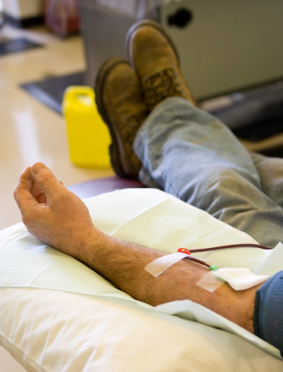Earn $300 per month for your blood. Economic hardship is leading to an increase in blood donation services offering money.
With credit card offerings decreasing and interest rising, many individuals who may have otherwise turned to credit when financially strapped are finding new ways to earn cash to finance things like entertainment, doctor’s visits and grocery bills.
Sasha Gorham, a Salt Lake City resident, who refers to herself as a starving artist, began donating her plasma twice a week when she needed extra cash for dental work several years ago.
The extra cash was addicting, as were the health checkups administered at the plasma donation center prior to any donation, and so Sasha continued to donate plasma twice a week for $65.
While plasma serves as a potentially life saving serum for patients who receive it’s therapies, for people struggling to put food on the table every day the payments they receive in exchange for plasma are also a lifesaver.
Justin Thorstrom, a Salt Lake City resident, donated plasma twice a week for an entire year as a college student. Justin suggests that the income received from donating plasma is not significant but that it could certainly help someone who is really strapped for cash.
“It might pay your gym membership for the month. It’ll pay one of your little monthly bills,” said Thorstrom.
According to Christine Kuhinka, Manager of Corporate Communications for ZLB Plasma Services, which has a donation center on 2978 South State Street, in South Salt Lake, the average monthly income for plasma donation is $300.
While the threat of diseases treated by plasma biotherapies are very real and often quantifiable, the number of families who financially benefit from payments received from plasma donation centers are considered proprietary, according to Kuhinka.
Instead, the Plasma Proteins Therapeutic Association tracks the number of donations of plasma per year. This number has been steadily increasing every year since 2005, when there was a shift in the paradigm for donation centers, according to Kuhinka. In 2005 plasma was donated 10.3 million times in the United States; in 2006 12.4 million times and in 2007 plasma was donated 15.3 million times.
While there is no concrete data to confirm an increased interest in plasma donation due to the current economic crisis, workers at local donation centers emphatically assert that more people have shown up to donate plasma in the past six months than in previous months.
Heidi Williams, Operations Supervisor and Assistant Manager at Biomat plasma, which has several Salt Lake City locations, including the one on 606 West North Temple, indicated that their donations have increased 20% in the past six months alone, up to 1,000 donations per week.
Williams explained that altruism often plays a role in a person’s decision to donate plasma, but that just as often the decision to donate is a purely financial decision.
Recently, the Associated Press reported that a Canadian Company is compensating military personnel vaccinated against anthrax as much as $45 for their plasma which will be used to develop a treatment for exposure to anthrax.
“I think it’s a good idea,” suggested Gorham when asked if people should exchange plasma for extra cash in turbulent times. “It’s a good thing as long as they understand what they’re getting into,” she concluded.
Donating plasma is a process similar to donating blood. According to donatingplasma.org, a needle inserted in the donators arm extracts blood, which accumulates in a medical device. The device separates the plasma for collection and returns the non-plasma portion of the blood to the donor. The entire process can take one to two hours to complete.
Most of the blood in the United States and in Utah is collected by the American Red Cross which serves 29 hospitals in Utah. The Red Cross doesn’t pay for donations because studies, and experience, have shown that people who donate for money may not be honest in their answers to questions in the screening process. There is nothing wrong with donating plasma for money but not all of that product gets to hospitals, some is used for research for commercial products, that’s where the money comes from to pay for the plasma.
Hello I live about an hour from the Boston area. I am trying to find some information on places in the area where I live who accept plasma donations for money. Any information in this would be helpful. Thank you.
response: From the Boston Globe in 2002:”Bio Life Plasma Services has leased space in a building owned by Trillium Corp. on 665 Stuart Road”. Read complete article here I hope this helps.
I always thought that donating plasma was done only by homeless people. I am sure that was/is a myth.
I am thinking that my daughter who is in school at USU should look into this.
Nice article.






